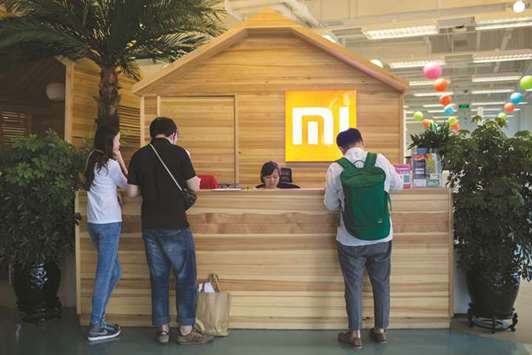Chinese smartphone maker Xiaomi Corp is making unusual preparations for what may be the world’s biggest initial public offering this year.
The Beijing-based company, led by serial entrepreneur Lei Jun, is promising to limit the net profit margin in its hardware business “forever” to no more than 5%, according to an e-mailed statement.
The policy will apply to smartphones – its biggest revenue source – as well as other gadgets it makes. It pledged to distribute the excess amount to its users if the margin exceeds the cap in coming years.
The unlikely proposal comes as Xiaomi is planning an IPO that could value the company at as much as $100bn. The profit cap signals that Xiaomi believes it can generate healthy profits from the services it provides alongside its hardware, including video streaming, online financing and advertising.
“It is a very aggressive target and commitment,” said Nicole Peng, senior director at the research firm Canalys. “It means Xiaomi is not only confident about recurring service revenue, but also optimistic about Chinese consumers’ consumption of digital services.”
Xiaomi is close to filing for its IPO in Hong Kong and also plans to issue Chinese depositary receipts for mainland investors. Depending on its valuation and the amount of equity it sells, Xiaomi could have the biggest IPO since Alibaba Group Holding’s $25bn debut in 2014.
It’s one of several Chinese startups that are gearing up to sell shares to investors in multibn-dollar IPOs. Meituan Dianping, a Chinese food review and delivery giant, has begun discussions about a Hong Kong offering at a valuation of at least $60bn. Meilishuo, an online fashion retailer backed by Tencent Holdings, is in talks with several investment banks about a US IPO that could value the startup at about $4bn.
The world’s fifth-largest smartphone vendor is aiming to take on Apple Inc and Samsung Electronics Co with devices packed with top-tier components at lower prices than its competitors. Apart from selling smartphones, Xiaomi also profits from advertising via its own apps and providing paid subscriptions for premium entertainment content such as online videos and literature.
“We have always viewed our hardware as the gateway to providing our users with internet services, and providing value to them over time,” Lei, Xiaomi’s co-founder and chief executive officer, said in the statement.
A commitment to low profits may play into the fears of Xiaomi skeptics who worry the phone maker won’t live up to its lofty valuation and cut it as a publicly-traded company. Based on Xiaomi’s profit pledge, the company would keep only about $10 from each $200 device sold.
Xiaomi still has quite a ways to go even to reach that figure. The company made an average of just $2 in profit per handset unit shipped in the third quarter of 2017, according to Counterpoint Research. By comparison, Apple and Samsung made $151 and $31 respectively. Even Huawei Technologies Co, China’s leading handset maker, earned $15.
Xiaomi’s pledge of a profit cap drew some concerns about how it would affect the broader industry.
“In the long run, it can’t be healthy for major smartphone vendors to have such a low margin,” said Antonio Wang, an analyst with researcher IDC. “If it’s just Xiaomi, it’s okay. But if it’s a much wider practice, it’s not good news for smartphone industry.”
Xiaomi, valued at about $45bn during a 2014 fundraising, suffered through a challenging 2016 and then bounced back by revamping its sales model and expanding in India, where it rivals Samsung as the biggest vendor. Xiaomi has chosen Morgan Stanley, Goldman Sachs Group Inc, Credit Suisse Group AG and Deutsche Bank AG for its IPO, people familiar with the matter have said.
Lei said that the strategy of restricting hardware profits is aimed at Xiaomi realising a vision of “innovation for everyone.”

Visitors stand at a reception desk inside a Xiaomi Corp office in Beijing (file). Xiaomi is close to filing for its IPO in Hong Kong and also plans to issue Chinese depositary receipts for mainland investors.


